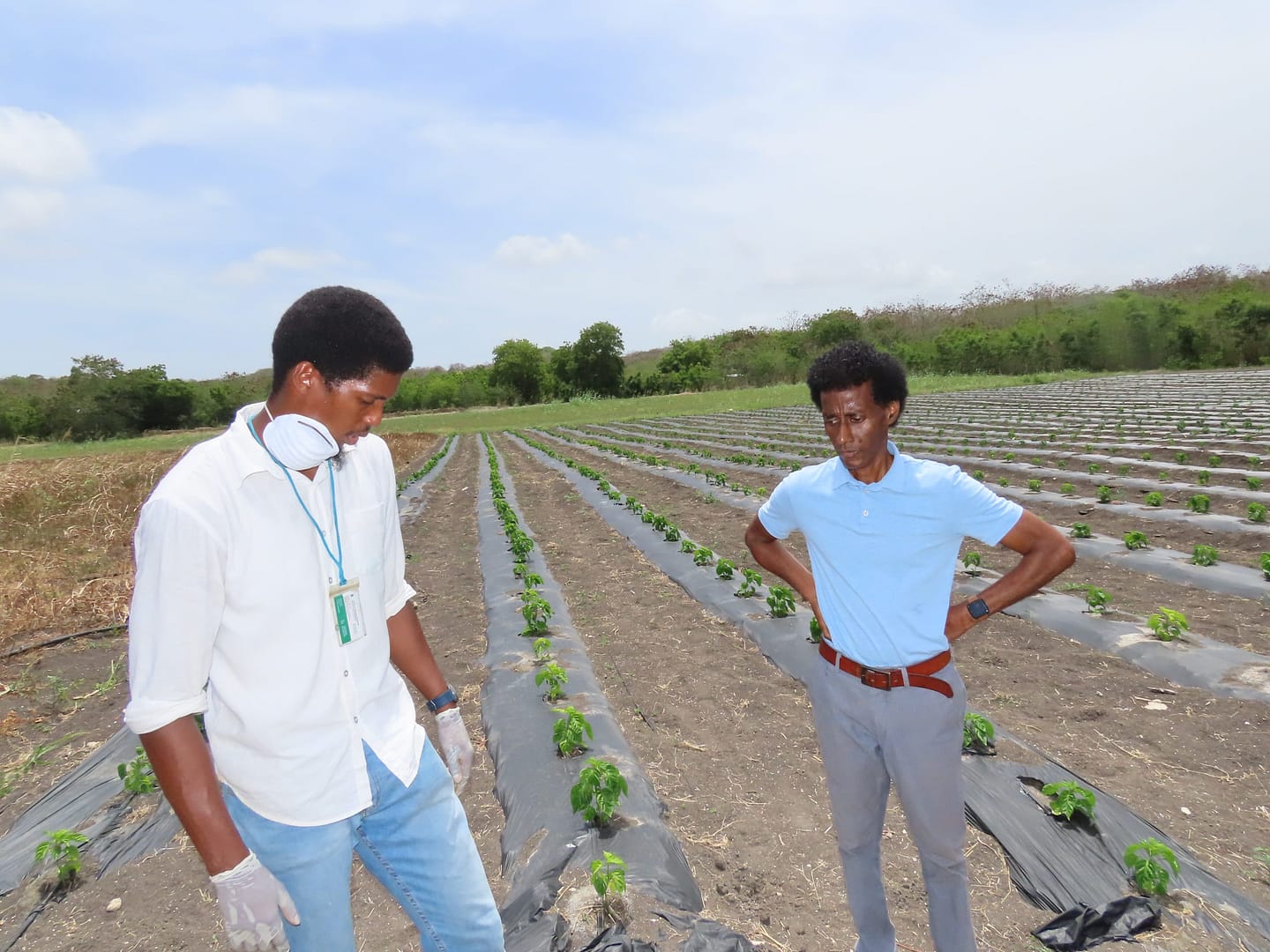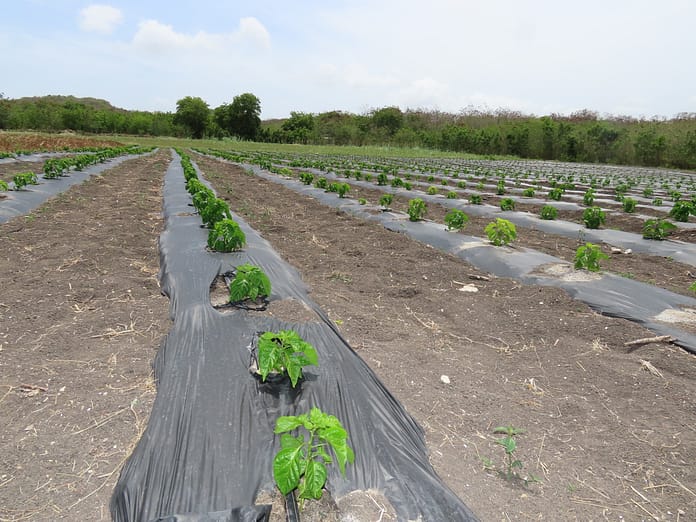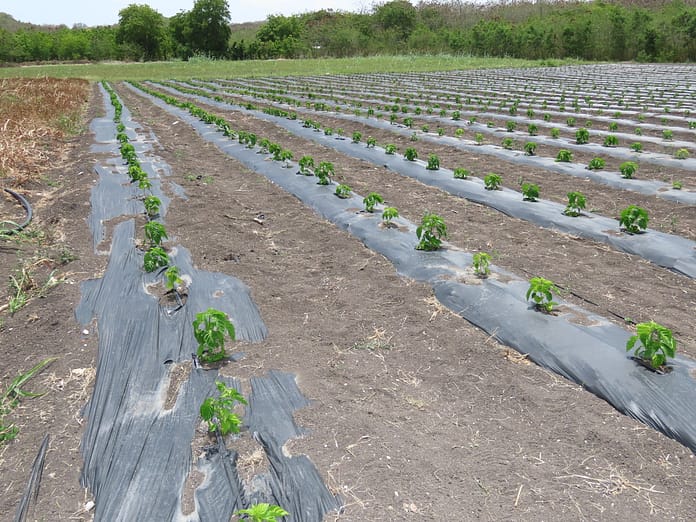
Technician at CARDI Antigua, Mr. Bradbury Browne, has highlighted the importance of the hot pepper production taking place in the field.
The production of commercial seeds of hot peppers- including West Indies Red, Scotch Bonnet and the Moruga Red are important commodities for countries around the region including Jamaica, Trinidad and the OECS.
Sharing some historical background on the method that is being used to produce hot peppers, Mr. Browne said that Antigua and Barbuda was one of the first countries in the Caribbean that started to practice drip irrigation technology from since in the 80s, thus having basically a 40- year advantage over some of the other countries.
Browne said that because the country is so dry, certain methods have been used to conserve the scarce water resources when growing the peppers which include, drip irrigation, coupled with plastic mulch or the previously- used grass mulch.

He explained the benefits of mulching.
“The mulch does three things: it suppresses the weed, the plastic mulch reduces the incidence of phytophthora which is prevalent a lot in green peppers and it conserves moisture, and this is one of the best systems in terms of drought management and water resource management for any crop for that matter.”
With Antigua and Barbuda being the center for hot pepper seeds, there is a certain amount of seeds that has to be produced every year no matter the type of weather that is being experienced.
“We have a mandate to produce a certain amount of seeds. Over the last couple of years, we target 50 lbs of seeds which is capable of producing a couple thousand acres of peppers,” Browne stated
There is different markets for the different variety of hot peppers – scotch bonnet attracts the Jamaican market, the West Indies red would attract the OECS and the Moruga Red is popular with Trinidad.

From transplanting to first flowering will take about a month and 45-60 days after, the first flush of fruits would become available for harvesting.
The Antiguan culture is not so much into hot peppers, According to Browne as they mostly use them for the agro-processing industry thus the reason why most farmers don’t really grow hot peppers on a massive scale.
“Most farmers don’t really grow hot peppers like that because for example, if a processor comes and get 300 hundred pounds of whether mash or peppers itself, he/she ain’t passing back until maybe 6 weeks or two months down the road as that is enough material to make whatever amount of hot sauce that they are making.”
He said that at different stages of the crop, different types of fertilizers are usually applied.
“For example at this stage, we are applying mostly nitrogen to get vigorous growth and then from next week, we start to apply potassium nitrate.”
He said that one has to know, based on the physiological development of the plant when and what type of fertilizer to apply in order to get maximum yield.
Browne added that their constant receipt of requests for hot pepper seeds from the region, is testimony of the high quality commodity that they are known to produce.
Advertise with the mоѕt vіѕіtеd nеwѕ ѕіtе іn Antigua!
We offer fully customizable and flexible digital marketing packages.
Contact us at [email protected]
















